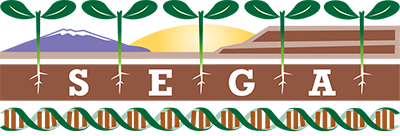You are here
Genetically based susceptibility to herbivory influences the ectomycorrhizal fungal communities of a foundation tree species.
Publication Type:
Journal ArticleSource:
The New phytologist, Volume 184, Issue 3, p.657 - 67 (2009)ISBN:
0028-646XURL:
http://www.ncbi.nlm.nih.gov/sites/entrez?Db=pubmed&DbFrom=pubmed&Cmd=Link&LinkName=pubmed_pubmed&LinkReadableName=Related%20Articles&IdsFromResult=19761493&ordinalpos=3&itool=EntrezSystem2.PEntrez.Pubmed.Pubmed_ResultsPanel.Pubmed_RVDocSumhttp://www.ncbi.Keywords:
Animals, DNA, Fungal, Ecosystem, Host-Pathogen Interactions, Models, Biological, Moths, Mycorrhizae, Pinus, SymbiosisAbstract:
<p>Although recent research indicates that herbivores interact with plant-associated microbes in complex ways, few studies have examined these interactions using a community approach. For example, the impact of herbivory on the community structure of ectomycorrhizal fungi (EMF) is not well known. The influence of host plant genetics on EMF community composition is also poorly understood. We used a study system in which susceptibility to herbivory has a genetic basis and a 20-yr insect removal experiment to examine the influence of chronic herbivory and plant genetics on the EMF community structure of Pinus edulis. We compared EMF communities of herbivore resistant trees, herbivore susceptible trees and herbivore susceptible trees from which herbivores were experimentally removed at two dates 10 yr apart. In both years sampled, resistant and susceptible trees differed significantly in EMF community composition. After 10 yr and 20 yr of herbivore removal, the EMF communities of removal trees were similar to those of susceptible trees, but different from resistant trees. The EMF community composition was more strongly influenced by innate genetic differences in plant traits associated with resistance and susceptibility to herbivory than by indirect effects of herbivory on host plant relationships with ectomycorrhizal fungi.</p>
- Log in to post comments
- Google Scholar
- RTF
- EndNote XML
- RIS
Theme by Danetsoft and Danang Probo Sayekti inspired by Maksimer
